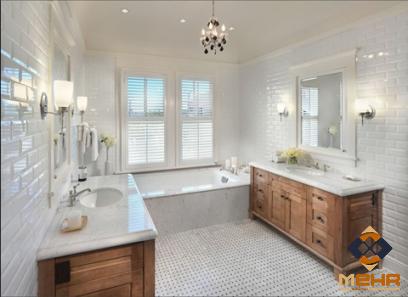In recent years, the demand for glazed tiles and ceramic 1401 has witnessed a significant surge, thanks to their exceptional aesthetic appeal and durable nature. These versatile materials have become an integral part of modern architectural designs, offering a plethora of possibilities for both indoor and outdoor applications. In this article, we will explore the features, benefits, and various applications of glazed tiles and ceramic 1401. Section 1: Understanding Glazed Tiles Glazed tiles are ceramic tiles that undergo an additional manufacturing process, where a layer of liquid glass is applied to the surface before being fired in a kiln.

.
 This process creates a non-porous, glossy surface that enhances the tile’s appearance and also adds a protective layer. Glazed tiles come in a wide range of colors, patterns, and textures, making them a popular choice for both residential and commercial spaces. Section 2: Advantages of Glazed Tiles 1. Visual Appeal: Glazed tiles offer a seamless and luxurious look that can transform any space into a visually stunning masterpiece. The glossy finish reflects light, creating a sense of depth and giving a spacious feel to the area. 2. Durability: The layer of glass applied to glazed tiles makes them highly resistant to water, stains, scratches, and fading caused by sunlight.
This process creates a non-porous, glossy surface that enhances the tile’s appearance and also adds a protective layer. Glazed tiles come in a wide range of colors, patterns, and textures, making them a popular choice for both residential and commercial spaces. Section 2: Advantages of Glazed Tiles 1. Visual Appeal: Glazed tiles offer a seamless and luxurious look that can transform any space into a visually stunning masterpiece. The glossy finish reflects light, creating a sense of depth and giving a spacious feel to the area. 2. Durability: The layer of glass applied to glazed tiles makes them highly resistant to water, stains, scratches, and fading caused by sunlight.
..
 This durability ensures that glazed tiles can withstand the test of time, even in high-traffic areas. 3. Easy Maintenance: The non-porous nature of glazed tiles prevents the absorption of liquids, making them easy to clean with regular household cleaning agents. They are also resistant to mold and mildew growth, making them an ideal choice for damp areas like bathrooms and kitchens. Section 3: Ceramic 1401: A Versatile Choice Ceramic 1401 is a specific type of glazed ceramic tile that has gained popularity due to its unique characteristics. It offers a blend of tradition and modernity, making it suitable for both contemporary and classic designs. Here are some notable highlights of ceramic 1401: 1. Authentic Appearance: Ceramic 1401 often replicates the look of historic tiles and traditional designs, allowing architects and designers to add a touch of nostalgia to their projects. The intricate patterns and colors give a timeless look to any space.
This durability ensures that glazed tiles can withstand the test of time, even in high-traffic areas. 3. Easy Maintenance: The non-porous nature of glazed tiles prevents the absorption of liquids, making them easy to clean with regular household cleaning agents. They are also resistant to mold and mildew growth, making them an ideal choice for damp areas like bathrooms and kitchens. Section 3: Ceramic 1401: A Versatile Choice Ceramic 1401 is a specific type of glazed ceramic tile that has gained popularity due to its unique characteristics. It offers a blend of tradition and modernity, making it suitable for both contemporary and classic designs. Here are some notable highlights of ceramic 1401: 1. Authentic Appearance: Ceramic 1401 often replicates the look of historic tiles and traditional designs, allowing architects and designers to add a touch of nostalgia to their projects. The intricate patterns and colors give a timeless look to any space.
…
 2. Variety of Applications: Ceramic 1401 tiles can be used in various applications, including floors, walls, backsplashes, and even as decorative accents. They are popular choices for restaurants, hotels, museums, and heritage buildings, where a touch of elegance and authenticity is desired. 3. Sustainability: Ceramic 1401 tiles are eco-friendly and sustainable, as they are made from natural materials and do not release harmful substances into the environment. Additionally, the manufacturing process minimizes waste and energy consumption, further reducing their carbon footprint. Conclusion: Glazed tiles and ceramic 1401 offer an extensive range of options for interior and exterior design projects. Their durable nature, easy maintenance, and captivating visual appeal make them an excellent choice for both residential and commercial spaces. With their authentic appearance and versatility, glazed tiles and ceramic 1401 are here to stay as essential elements in modern architecture and design.
2. Variety of Applications: Ceramic 1401 tiles can be used in various applications, including floors, walls, backsplashes, and even as decorative accents. They are popular choices for restaurants, hotels, museums, and heritage buildings, where a touch of elegance and authenticity is desired. 3. Sustainability: Ceramic 1401 tiles are eco-friendly and sustainable, as they are made from natural materials and do not release harmful substances into the environment. Additionally, the manufacturing process minimizes waste and energy consumption, further reducing their carbon footprint. Conclusion: Glazed tiles and ceramic 1401 offer an extensive range of options for interior and exterior design projects. Their durable nature, easy maintenance, and captivating visual appeal make them an excellent choice for both residential and commercial spaces. With their authentic appearance and versatility, glazed tiles and ceramic 1401 are here to stay as essential elements in modern architecture and design.










Your comment submitted.